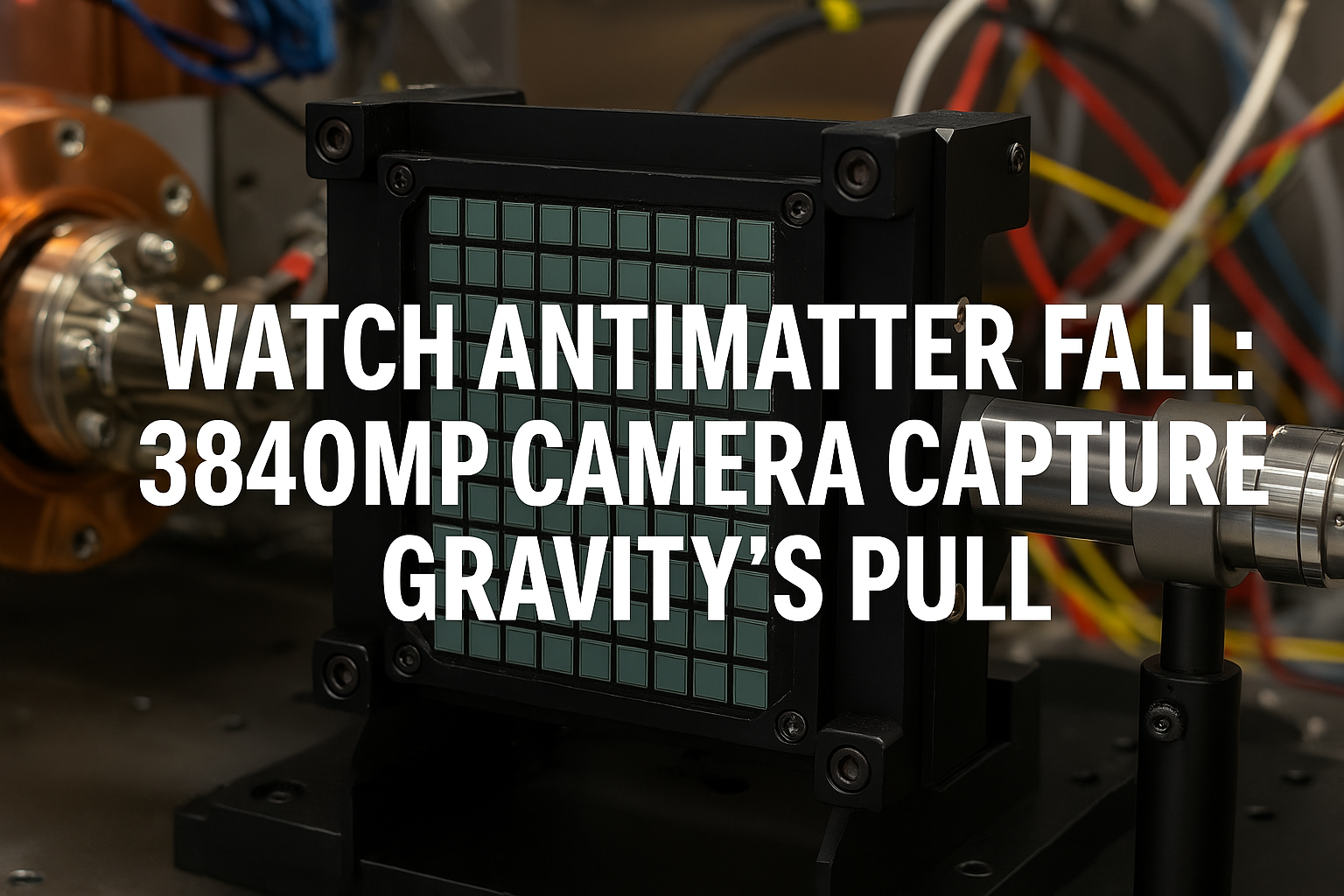In a stunning advancement, CERN scientists have developed a 3840-megapixel imaging system using modified mobile phone camera sensors to capture how antimatter behaves under gravity. This breakthrough could transform our understanding of the fundamental forces governing the universe.
What is Antimatter?
Imagine every fundamental particle that makes up the normal stuff around us – electrons, protons, neutrons – has a mirror image. That’s antimatter in a nutshell. For every particle of matter, there’s a corresponding antiparticle.
These antiparticles have the same mass as their matter counterparts but opposite electric charge and other quantum properties. So, you’ve got antielectrons (also called positrons), antiprotons, and antineutrons.
Now, here’s the wild part: when a particle of matter meets its antimatter twin, they don’t just bump into each other. They annihilate in a burst of pure energy, like a tiny explosion described by Einstein’s famous E=mc2.
Scientists have actually created and studied antimatter particles in labs using particle accelerators. It’s not just science fiction! And get this – even bananas produce a tiny bit of antimatter (positrons) every now and then.
One of the big mysteries in physics is why the universe seems to be overwhelmingly made of matter and not antimatter. The Big Bang should have created equal amounts of both, but something tipped the scales. It’s a cosmic puzzle we’re still trying to solve!
Tracking the Fall of Antihydrogen
Researchers at CERN’s Antimatter Factory are investigating whether antihydrogen falls in the same way as normal matter. The AEgIS experiment (Antihydrogen Experiment: Gravity, Interferometry, Spectroscopy) is one of several efforts, including ALPHA and GBAR, aimed at solving this fundamental question.
Using a horizontal beam of antihydrogen, AEgIS tracks the subtle vertical shifts in its movement. This requires extreme precision, which is where the Optical Photon and Antimatter Imager (OPHANIM) comes into play.
3840MP Camera: A Game-Changer in Precision Imaging
Traditional photographic plates were once the gold standard for antimatter research, but they lacked real-time tracking. Now, CERN scientists have built a next-generation detector by integrating 60 high-resolution mobile camera sensors, achieving the highest pixel count ever used in such experiments.
“For AEgIS to work, we need a detector with incredibly high spatial resolution, and mobile camera sensors offer pixels smaller than 1 micrometer,” explains Francesco Guatieri, Principal Investigator at TUM’s FRM II research facility.
By removing the top layers of mobile sensors, scientists created an ultra-sensitive detector capable of capturing low-energy positrons in real-time—a feat previously thought impossible.
Expanding the Possibilities of Physics Research
Beyond antimatter research, this high-resolution imaging technology could revolutionize particle physics experiments that demand precise tracking.
“This extraordinary resolution allows us to distinguish between annihilation fragments, opening new avenues for studying low-energy antiparticle interactions,” says AEgIS spokesperson Dr. Ruggero Caravita.
The Future of Antimatter Studies
With real-time diagnostics, self-calibration, and unparalleled precision, this new imaging system marks a significant leap in antimatter experimentation. As scientists continue their quest to uncover whether antimatter follows the same gravitational rules as ordinary matter, this technology will play a critical role in answering one of physics’ most intriguing mysteries.
Reference: Link

